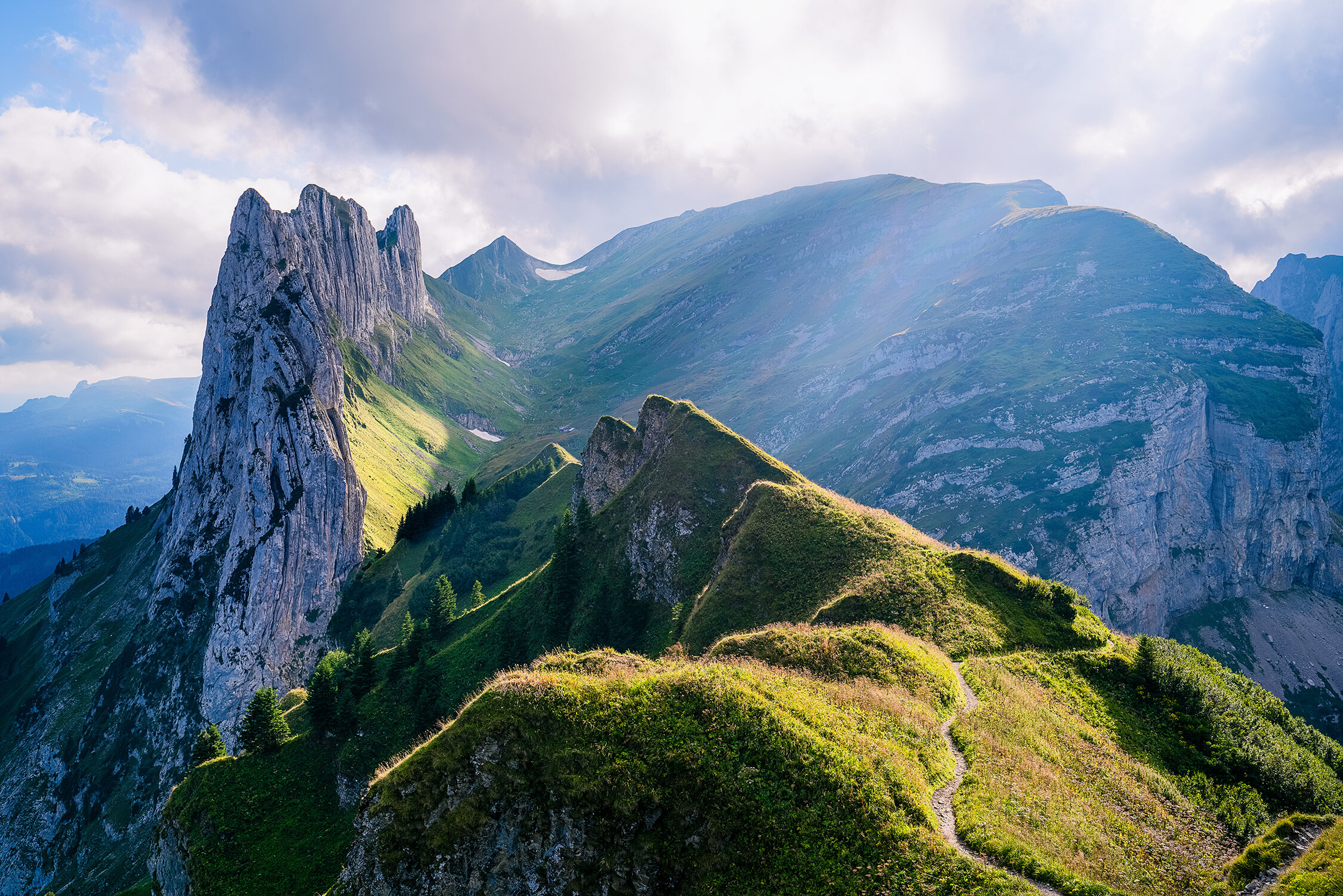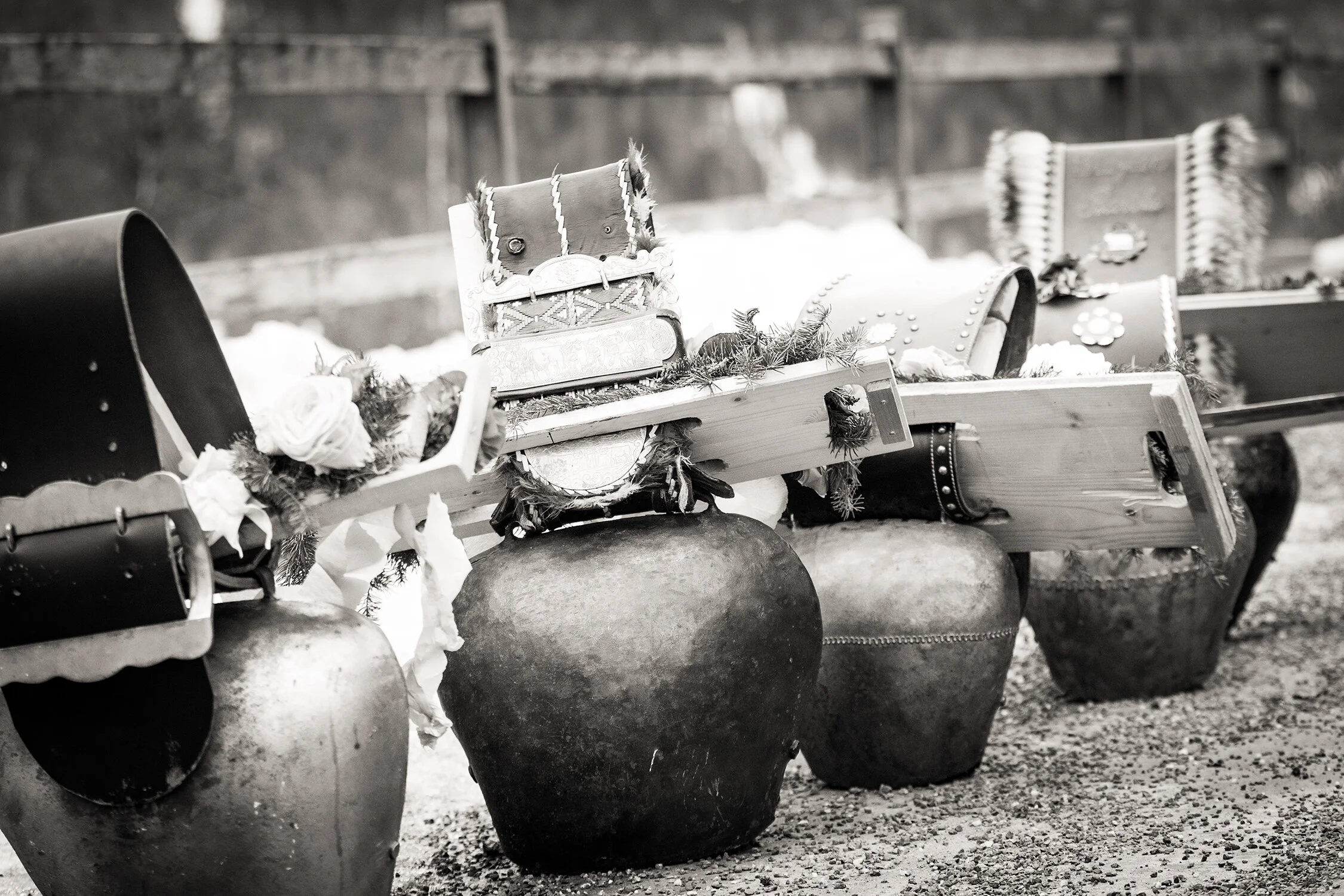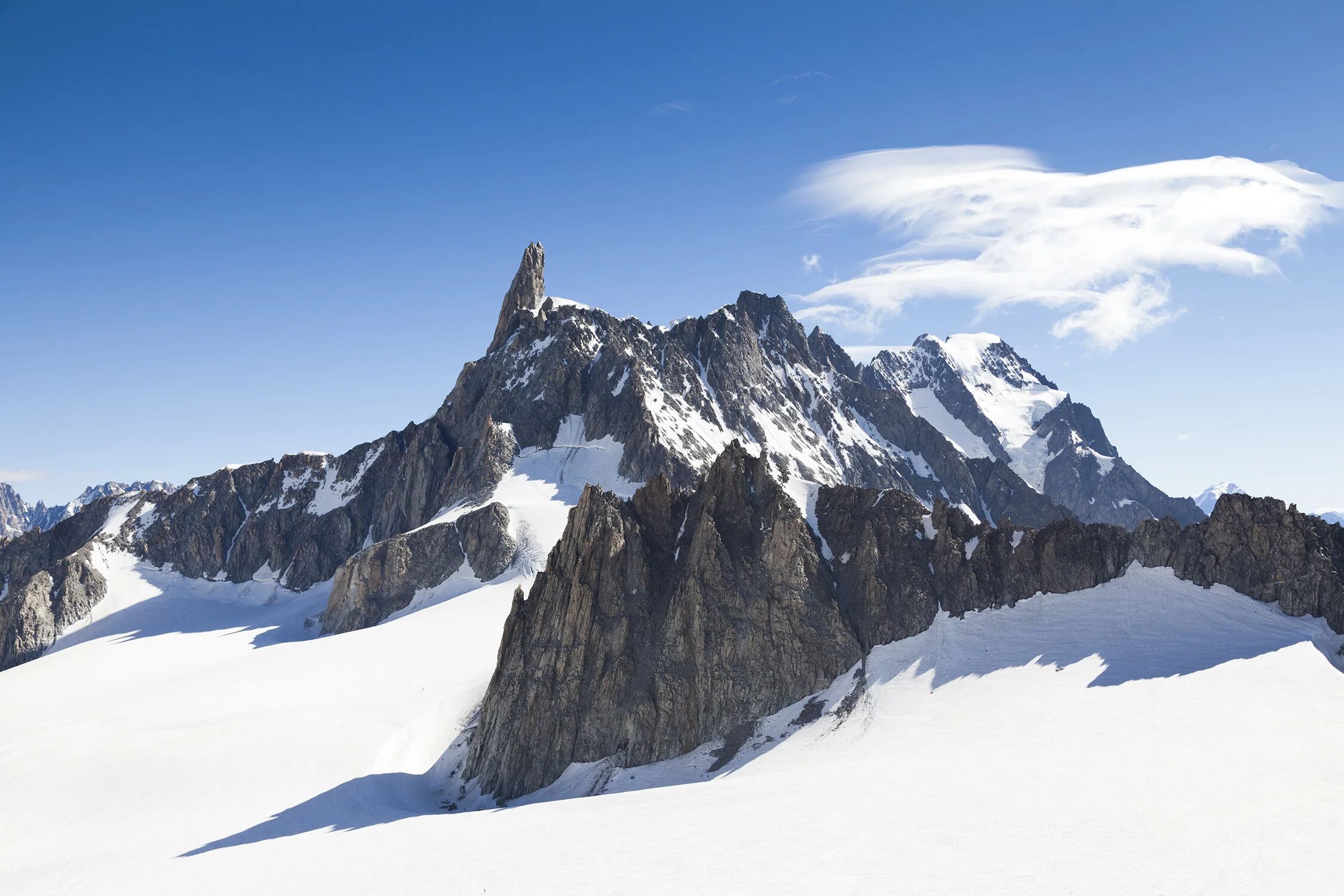The village of Spiez offers one of the prettiest lakeside views in Switzerland, but surprisingly, a great number of visitors to the Swiss Alps have absolutely no idea that this spot exists. Many visitors just cruise right through Spiez on the train, or they pause in the Spiez rail station just long enough to switch trains on their way to Interlaken, Bern, Zermatt, or other destinations in Switzerland. The fact that so many people just whiz right by is a shame because the castle tower where this photo was taken is just a 15 minute walk from the rail station and it offers incredible views along with a fascinating cultural experience.
Like so many places in Switzerland, the evidence of human history in Spiez dates back thousands of years. A wealth of artifacts unearthed in Spiez date to the Bronze and Iron Ages.
The Romanesque church that stands today, and is the main subject in the above photo, is over 1,000 years old. Less is known about the exact build date of the adjacent castle (Schloss Spiez), but archeologists are fairly certain that some form of fortification existed during the Bronze Age, and they know with certainty that the current castle keep and portions of the walls are 800-900 years old.
There’s an outstanding little museum at the castle where visitors can visit the medieval castle kitchen, stroll through an early-baroque ballroom, or climb up the castle tower for 360 degree panoramic views of the Bernese Alps, Lake Thun, and the neighboring vineyards. And, if you look closely, you can see tournament graffiti etched into the upper level of the tower that dates from around 1300 A.D. Intricately sketched scenes of local tournaments offer an outstanding glimpse of everyday life for wealthy barons in the Bernese Oberland during the High Middle Ages.
If this sort of thing interests you, then check out our previous post titled Traveling From Zürich To Interlaken? Visit A Swiss Castle And Ride A Historic Lake Steamer During Your Trip.
You can visit the church and castle in Spiez and then hop on a historic Lake Steamer to continue your trip to the Jungfrau region of the Berner Oberland. The midday steam ship departs Spiez at 01:28 pm for arrival in Interlaken at 02:49 pm.
This is an outstanding addition to one of our Berner Oberland inn-to-inn hiking tours!
See you in Spiez!













